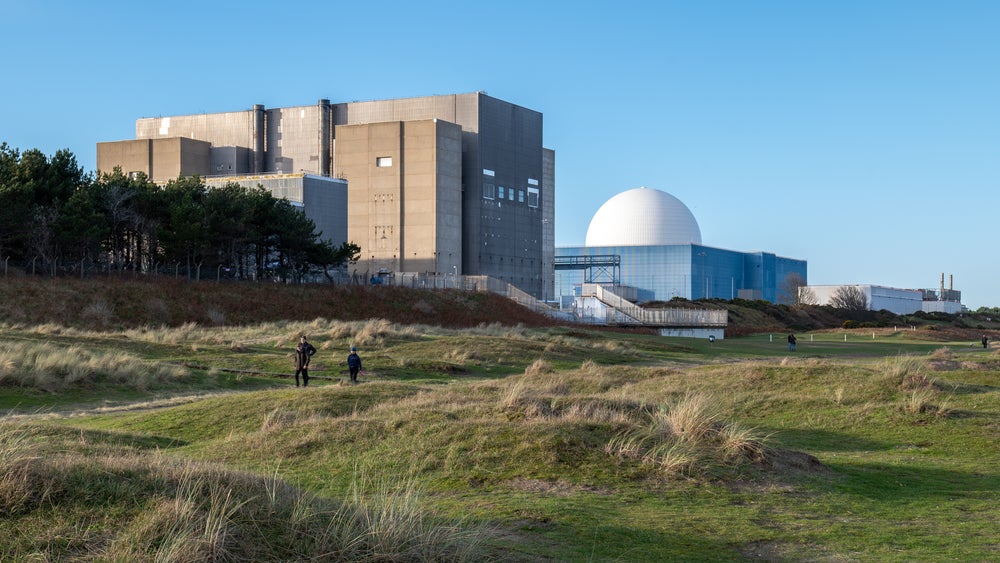Addressing the climate crisis forms one of the central themes of the UK general election on 4 July 2024, an important feature of which is nuclear energy.
The two major parties have made manifesto commitments to pursue investment in the UK’s nuclear power industry. As the election looms closer, polls suggest a Labour victory with the party likely to secure a majority. So, what does the future hold for nuclear energy under a Labour administration?
The current state of nuclear energy
In his 2023 Spring Budget, Jeremy Hunt announced the launch of Great British Nuclear, a public corporation that aims to drive investment in the UK’s nuclear power sector to produce 25% of the nation’s electricity by 2050. The policy launch also redefined the status of nuclear power, making it a ‘green’ energy alongside renewables like wind and hydropower.
Nuclear power is therefore being pursued for its renewable qualities, but also for its ability to provide energy security. Ministers take inspiration from France which operates 56 reactors in comparison to the UK’s nine. As a result, according to GlobalData around 70% of France’s electricity was generated by nuclear power in 2023.
The cheap nature of generation allows it to be a net exporter, creating €3bn ($3.2bn) in revenue a year. In comparison, nuclear comprised of only 12% of electricity generation in the UK.
This picture can be explained by chronic underinvestment in nuclear energy. According to GlobalData, between 2006 and 2022 there was no new investment in nuclear power, while proposed new plants at Hinkley Point and Sizewell are struggling to achieve final levels of investment.
The current state of nuclear energy in the UK represents an optimistic future – yet it is overshadowed by a neglected near past and a problematic present.
Starmer’s plan
Labour’s manifesto promises the establishment of Great British Energy (GBE) within its first year of power. According to a report by PoliticsHome, GBE will stop short of public ownership and initiate no new nationalisations, acting solely as a vehicle to encourage greater investment in the energy industry.
Through GBE, Labour is committing to investment in power stations and Small Modular Reactors (SMRs), promising to “get Hinkley Point C over the line”.
Investment pitfalls
The problematic nature of the UK nuclear industry will surely be a challenge for any incoming government. Proposed new plant, Sizewell C, has been described as ‘delay-ridden’, as it struggles to achieve critical levels of investment.
Initially a combined venture between EDF and China General Nuclear Power Group (CGN), security concerns drove the Chinese company out. Moreover, EDF announced that it would be downsizing its share from 50% to 25%, leaving a large capital shortfall. Similarly, at Hinkley Point C mounting costs led EDF into seeking loan guarantees from the UK government on a project that was initially meant to be completed in 2017 but is now said to be expected by 2029 at the earliest.
Labour suggests that GBE would help to encourage greater levels of investment which would get projects such Hinkley Point C “over the line”. The director of Commonwealth, Mathew Lawrence, has confidence in the potential impact of GBE but emphasises the need for scale if it is to gain any traction while stopping short of nationalisation.
Analysis by the TUC has estimated that for Labour to achieve its GBE pledges, levels of investment must amount to between £61 and £82bn – whilst Starmer has only committed £8.3bn so far.
It takes only a brief look at the numbers to realise that they do not add up.
Developing the nuclear industry to a level that will provide greater energy security will require large levels of fixed capital investment that has hitherto been insufficient. Moreover, Labour have so far mentioned nothing about electrification, which industry leaders regard as the preeminent issue.
Lack of capacity on the grid means that wind farms in Scotland are forced to shut down on windy days, amounting to losses of £1bn a year. Therefore, even if nuclear generation capacity is increased, if the grid is not up to the increased levels of supply this capacity will be wasted
Cause for nuclear energy optimism
There are reasons to be optimistic about the future of nuclear energy in the UK. It plays a leading role in the research, design and manufacture of SMRs, which due to their characteristics can be constructed comparatively cheaply and efficiently – providing stop gaps when older plant technology is decommissioned and goes offline.
Rolls-Royce are at the forefront of such efforts, having one of their SMR designs approved for plant construction in Poland last month. The government has pledged to invest £215m in SMR development, which according to a government report could provide 450,000 homes with energy at peak output and create 40,000 new jobs.
Additionally, focus remains on new large plant construction. It was announced last month that two new sites had been acquired by the state for construction: Wyfla in North Wales and Oldbury-on-Severn in Gloucestershire, representing the first time the government has purchased land for new nuclear projects since the 1960s. And another project specifically of importance for energy security is a £196m investment by the state (to be matched by the private sector) in a new Uranium Enrichment Plant in Cheshire.
If successful, this would go some way to ending reliance on the Russian uranium fuel which currently dominates the market due to competitive edge. This progress depends on investment and as shown above, it will take large sums to fulfil this.
An incoming Labour government has huge amounts to gain regarding nuclear energy – both in terms of getting large plant online and unlocking the potential of SMRs – but they must mobilise both public and private capital to do this.
So, far the pledges manifested through Great British Energy will be insufficient. Time will tell whether the GBN pledge of 25% nuclear electricity generation can be achieved, granting the UK with both a viable alternative for renewable energy as well as an important ballast for energy security going forward.





